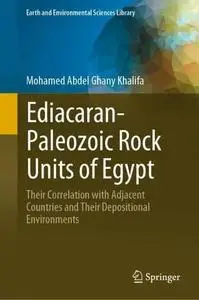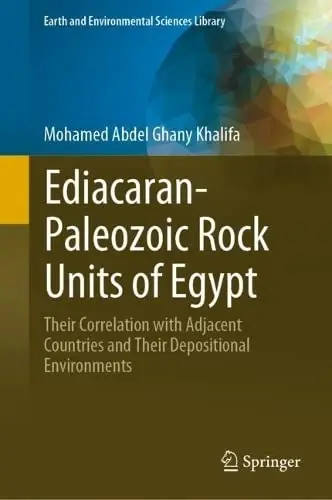Ediacaran-Paleozoic Rock Units of Egypt: Their Correlation with Adjacent Countries and Their Depositional Environments by Mohamed Abdel Ghany Khalifa
English | PDF | 2023 | 222 Pages | ISBN : 3031273192 | 13.3 MB
This book presents the following geological contributions in Ediacaran and Paleozoic rocks. 1) It introduces four new rock units for the first time, the Ediacaran El Urf Formation (volcanoclastic sediments in the central Eastern Desert), the Ediacaran Abu Haswa Formation (stromatolitic dolostone in southwestern Sinai), the Early Permian Wadi Dome Formation (mixed clastics and carbonates in the west of Suez Gulf) and the Early Permian Misawag Formation (in the subsurface, northwestern Desert), 2) making correlation of the Ediacaran rock units with the corresponding rock units in Libya, Jordan, Iraq and Saudi Arabia, 3) linking the exposed Paleozoic rock units with their equivalent rock units in subsurface in northwestern desert, 4) correlating the Paleozoic rock units with the equivalent rock units in adjacent countries, e. g. Libya, Jordan, Iraq and Saudi Arabia, 5) manifesting the possible depositional environments of the Ediacaran and Paleozoic rock units.
Additionally, it offers an important unique geological information about the Ediacaran and Paleozoic rock units in Egypt. It unifies the nomenclature of Paleozoic rock units that take numerous names for the same geological time. It obsoletes the formation names that do not follow the rules of the North American stratigraphic code (1983) for rock units’ nomenclature. It provides the target audience illustrations, e.g. field photographs for the exposed rock units that save efforts and time for audience (undergraduate, post-graduate, researchers and professional) to reach to the original localities of each rock units. It provides the audience with schematic diagrams that exhibit the link between the exposed and subsurface rock units all over the Egyptian territory. It describes the following topics of each rock unit: definition, stratigraphic contact, lithological characteristics, faunal and floral associations that are used for the identification of the possible age, correlation with corresponding rock units in adjacent countries, e.g. Libya, Jordan, Iraq and Saudi Arabia and the possible depositional environments for each rock units.
The book is a fundamental source of an updated version of the information in the field to the undergraduate, graduate, researchers, professional, practitioners and policy planning elsewhere.
Without You And Your Support We Can’t Continue
Thanks For Buying Premium From My Links For Support
Thanks For Buying Premium From My Links For Support



